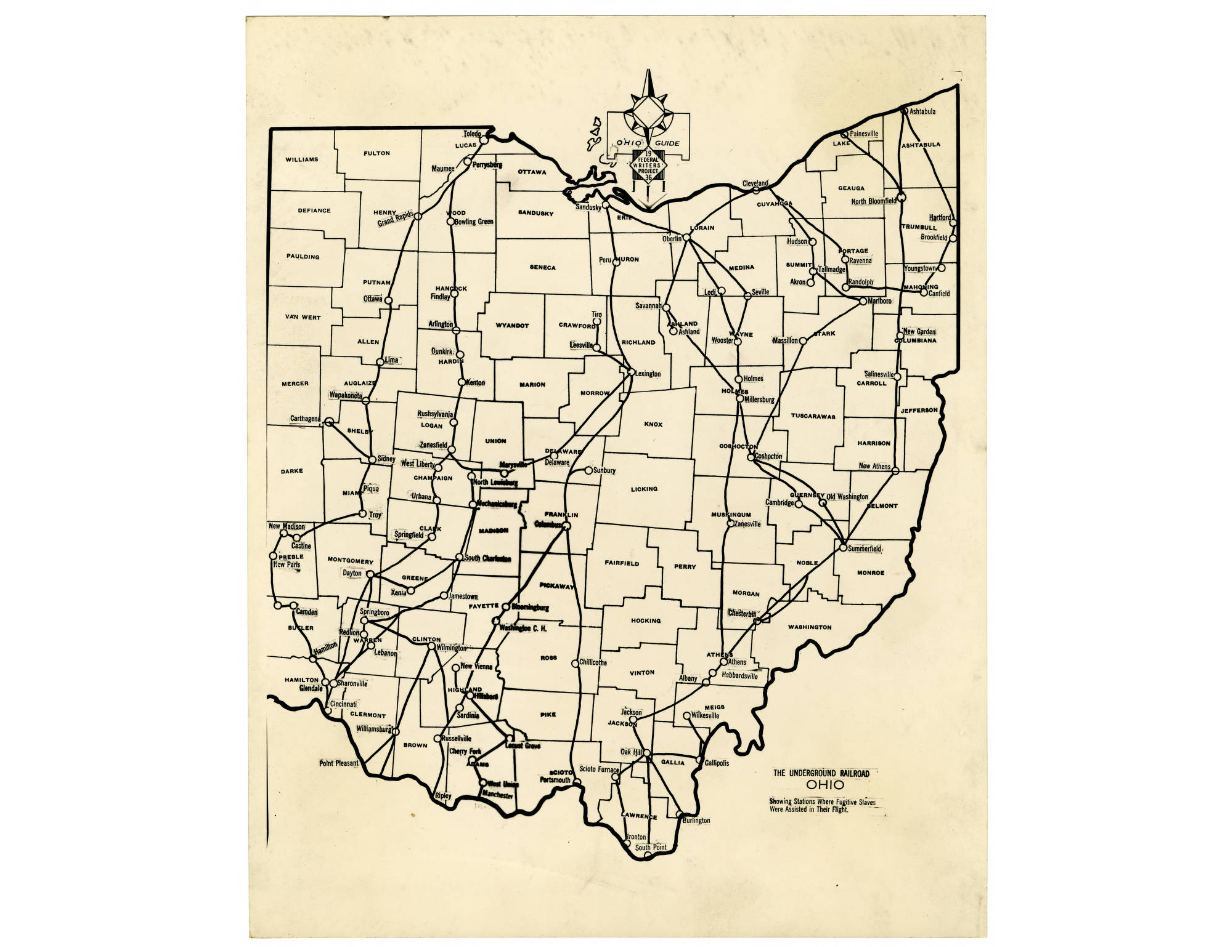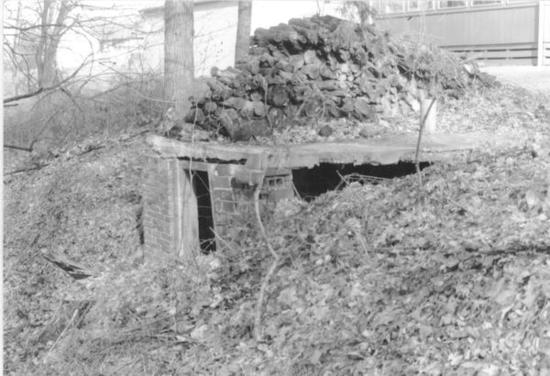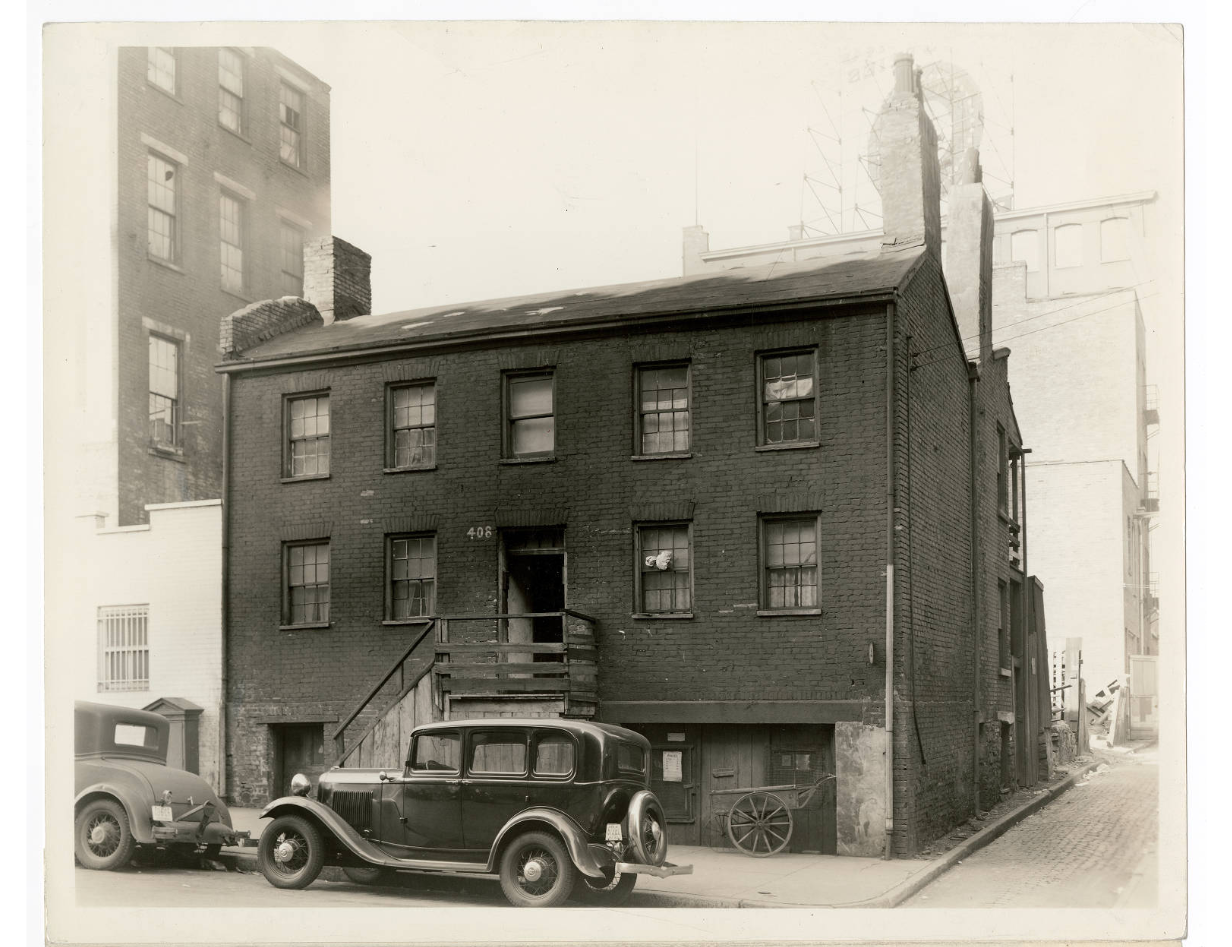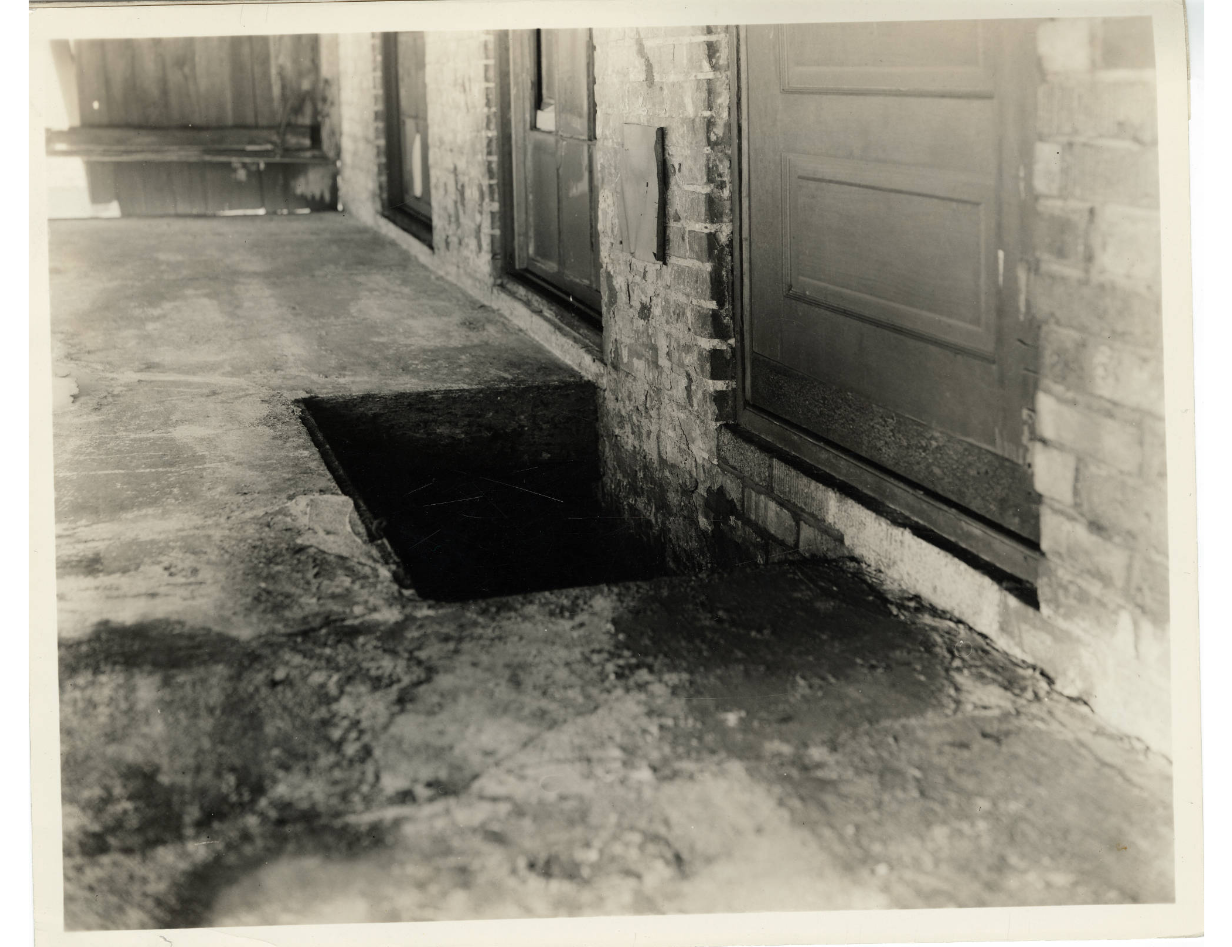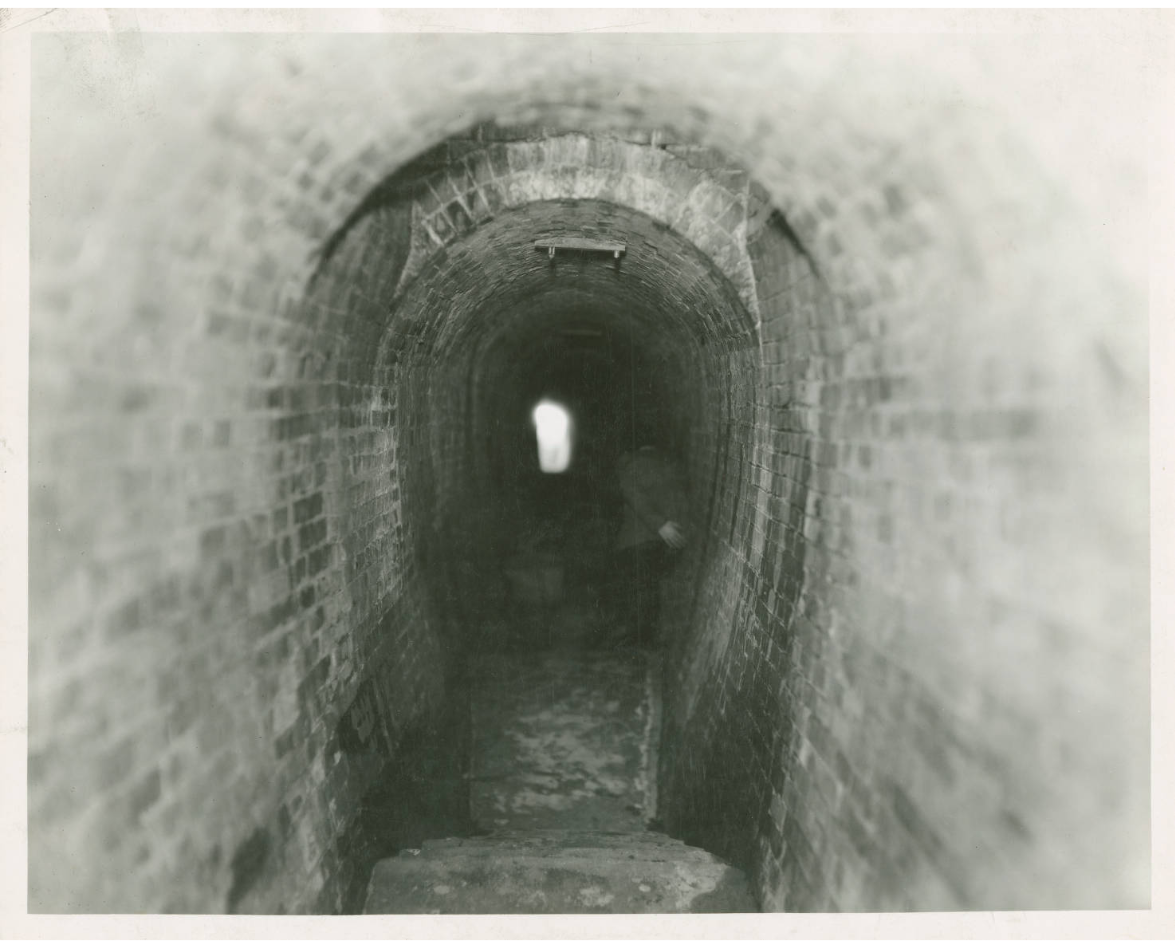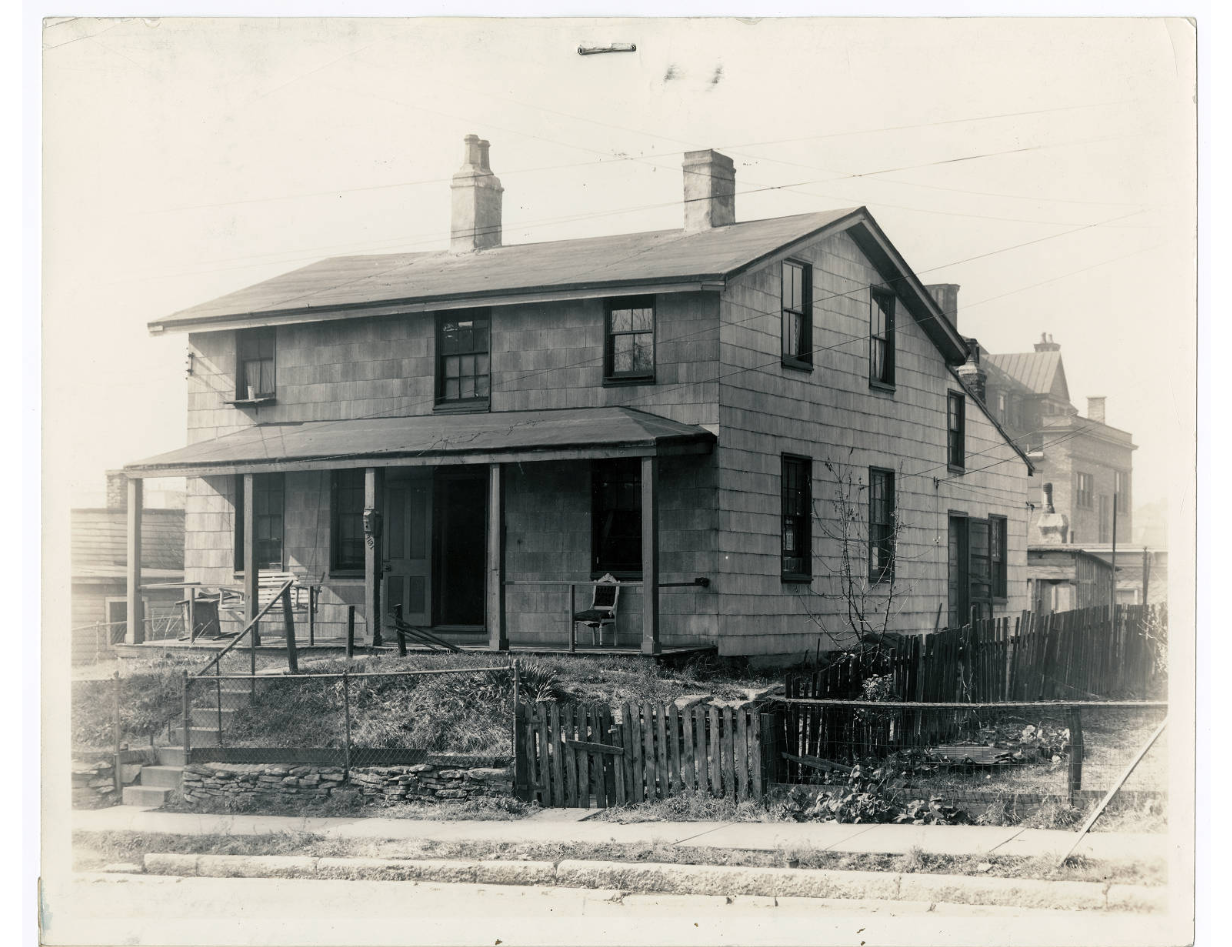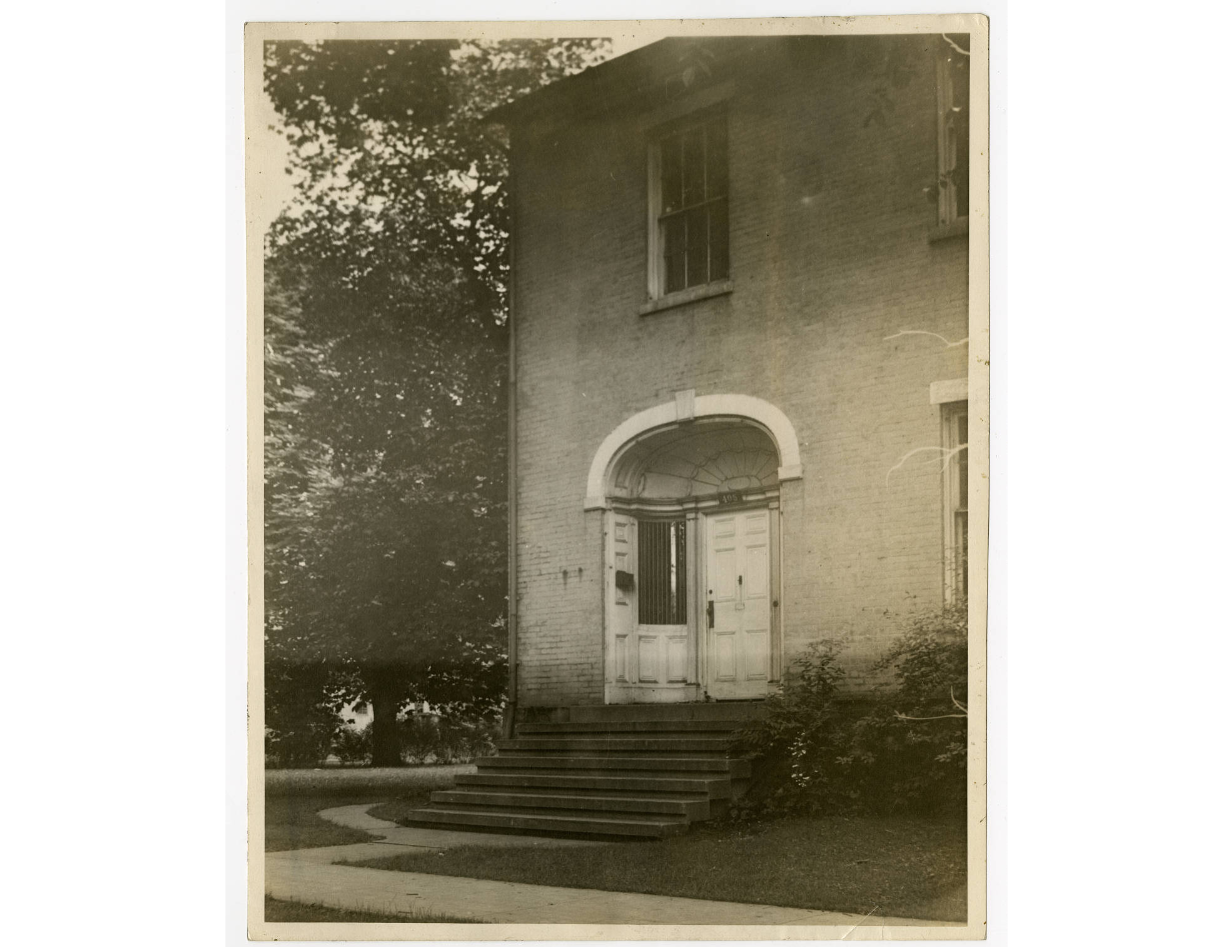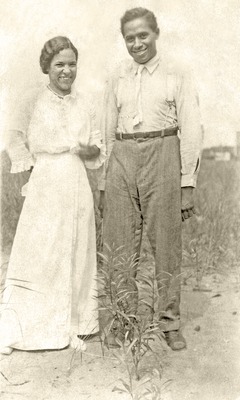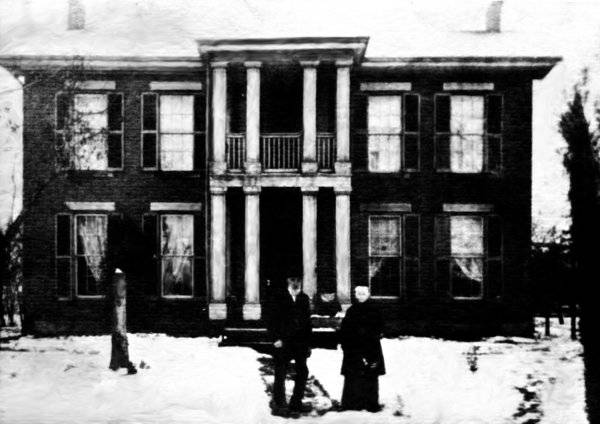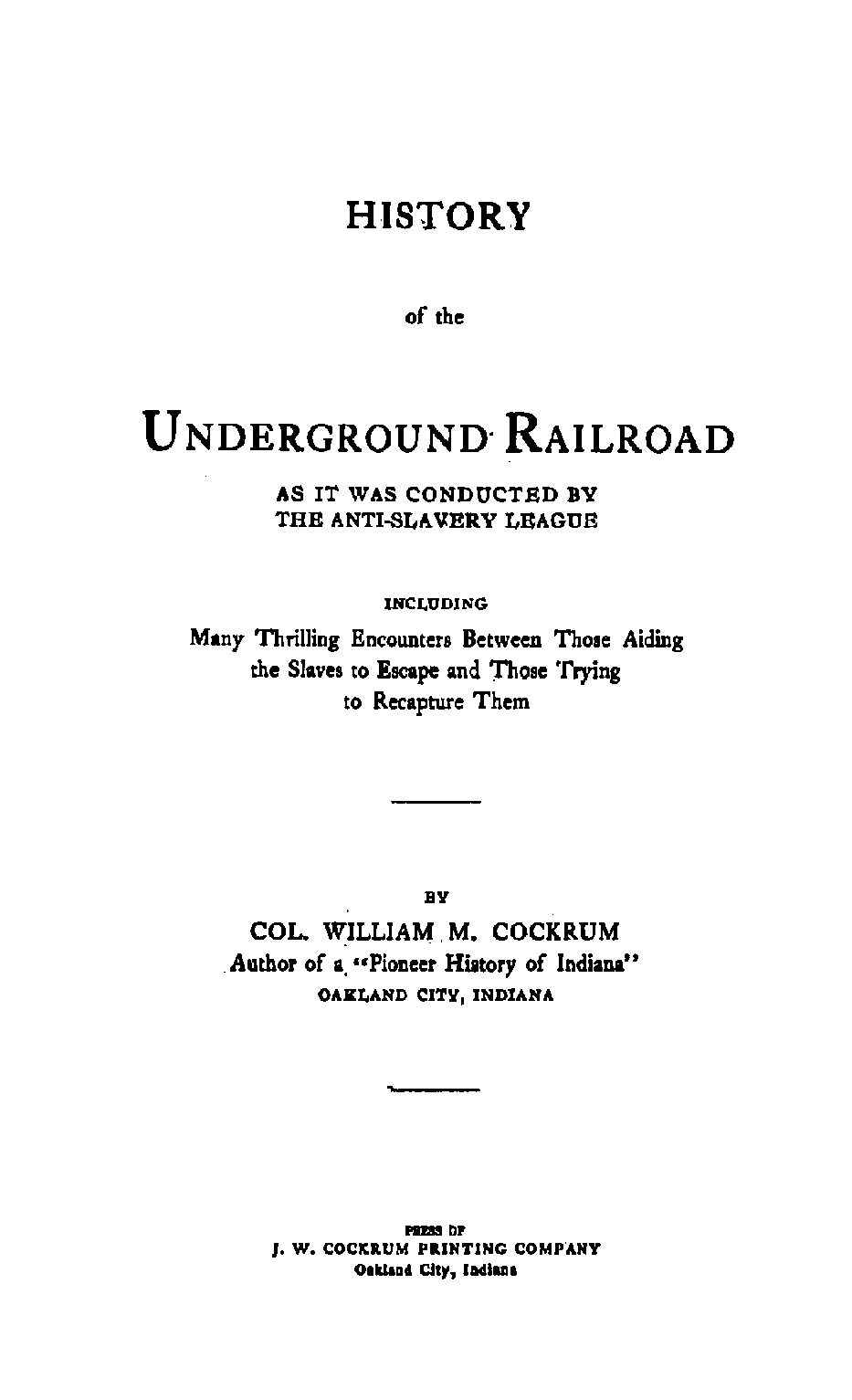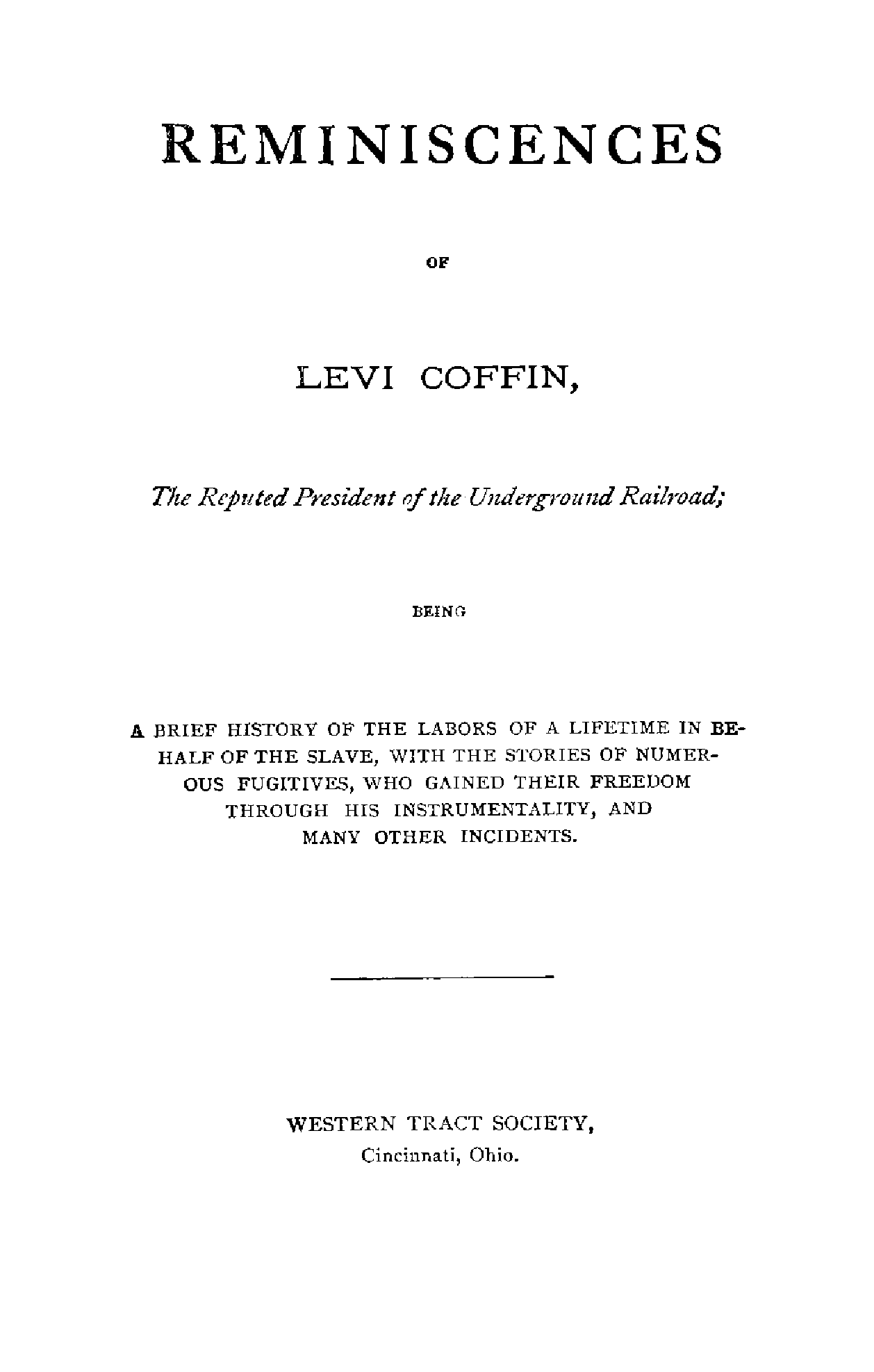The Underground Railroad in Ohio
Module Overview
- Topic: The Underground Railroad in Ohio
- Time Period: Early to mid 1800s
- Keyword(s): Slavery, Underground Railroad, African Americans, Abolition
- Grade Level(s): Grades 6-12
- Learning Standard(s):
- Grade 8 Social Studies (History Strand): Historical Thinking and Skills, Content Statement 1; Colonization to Independence, Content Statement 4; Civil War and Reconstruction, Content Statement 12
- High School Social Studies (American History): Historical Thinking and Skills, Content Statement 2; Industrialization and Progressivism, Content Statement 13.
The Underground Railroad is a term for the covert network of people and places that assisted fugitive slaves as they escaped from slavery in the South. Most widespread during the three decades prior to the Civil War, this activity primarily took place in the regions bordering slave states, with the Ohio River being the center of much of the activity.
Of course, Underground Railroad activity did not literally take place underground or via a railroad, nor was it an official organization with defined structure. It was simply a loose network of people who attempted to move enslaved individuals escaping from slavery to and from safe places in a quick and largely secretive manner.
At the heart of the Underground Railroad were the beliefs of the abolitionist movement. The 18th Century Quakers, members of the Religious Society of Friends, were the first organized abolitionists, believing that slavery violated Christian principles. By the first decades of the 1800s, every state in the North had legally abolished slavery.
Abolitionist ideas then spread West into the territories that would soon become Indiana and Ohio. Abolitionists firmly believed that slavery was against their Christian faith. Others considered the contradictory aspects of independence for a country that held enslaved individuals, which led many to become active on the Underground Railroad.
Description courtesy of National Underground Railroad Freedom Center
- The Underground Railroad
- The Underground Railroad in Pictures
- Portraits of Underground Railroad Conductors
- Histories of The Underground Railroad
After the primary source items, you will find an Additional Resources list and a Teaching Guide that includes discussion questions and classroom activities.
The Underground Railroad
Report of the first anniversary of the Anti-slavery Society
Contributed by the Public Library of Cincinnati and Hamilton County
Underground Railroad Routes in Ohio map
The Underground Railroad in Pictures
Underground Railroad Shelter
Underground Railroad station
Underground Railroad station back porch
Levi Coffin house
Buckingham House doorway in Zanesville, Ohio
Portraits of Underground Railroad Conductors
Evelyn Gertrude (Foster) McCurdy and LeRoy “Roy” Nelson McCurdy
Portrait of Sarah and Jonathan Haines
Histories of the Underground Railroad
History of the Underground Railroad as it was conducted by the Anti-Slavery League : including many thrilling encounters between those aiding the slaves to escape and those trying to recapture them
Contributed by the Public Library of Cincinnati and Hamilton County
Reminiscences of Levi Coffin, the reputed president of the underground railroad : being a brief history of the labors of a lifetime in behalf of the slave, with the stories of numerous fugitives, who gained their freedom through his instrumentality, and many other incidents
Contributed by the Public Library of Cincinnati and Hamilton County
Additional Resources
- National Underground Railroad Freedom Center – The National Underground Railroad Freedom Center is a museum of conscience, an education center, a convener of dialogue, and a beacon of light for inclusive freedom around the globe. Located in Cincinnati, Ohio.
- Ohio History Central, Underground Railroad – This article provided by the Ohio History Connection provides a historical overview of the Underground Railroad and Ohio’s part in it.
- National Afro-American Museum & Cultural Center – Enjoy regularly changing exhibits and special programs sharing African American history, art and culture at this museum in Wilberforce, Ohio, home of two historically black universities: Wilberforce and Central State.
- Detroit Historical Society, Underground Railroad – A discussion and overview of the Underground Railroad with biographical information on abolitionists from the Detroit, Michigan area.
Teaching Guide
This guide will serve to outline some possible ways to interact with the digital content and has suggestions to have students pull information from the examples listed above.
Discussion Guide
- How would escaped slaves navigate the underground railroad on their way north?
- Where would those traveling through the underground railroad settle after their travels?
- What towns and cities in Ohio did escaped slaves pass through on their way north?
- Where would underground railroad conductors hide escaped slaves?
- Are there any underground railroad stops in your county that still exist and can be visited?
Download Discussion Questions (PDF)
Classroom Activities
- Were escaped slaves universally welcome in Ohio? Research the background of the Fugitive Slave Laws of 1793 and 1850 and how they affected the activities of the Underground Railroad, as well as 19th century viewpoints of Ohioans on slavery.
- Visit the list of official Underground Railroad sites by the National Park Services either as individuals or in small groups. Choose one to research for a short presentation for the class (individual) OR Break into small groups and have each group pick a different Ohio site for a group presentation.
- Imagine that you or you and a group have managed to flee the south and make your way north. Use the information you’ve learned about the Underground Railroad to create a first-person account of what it would have been like to make this treacherous journey either alone or as a group. Think about the dangers you would encounter along the way, what path you would take to navigate to safety, and how you would have thought about the people who helped you.

